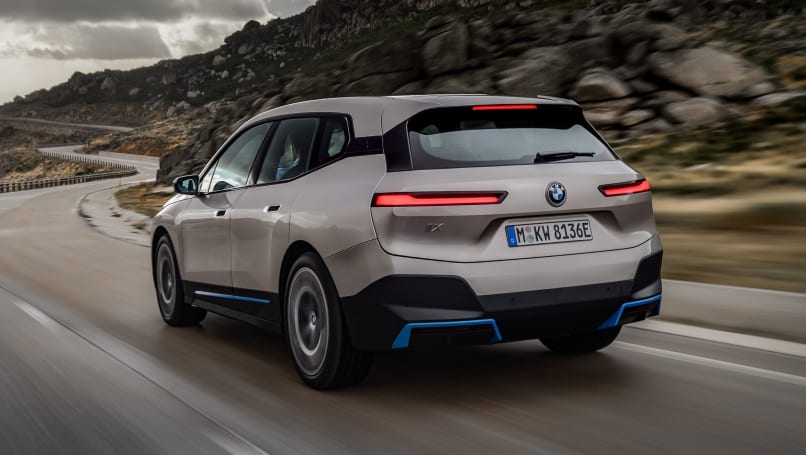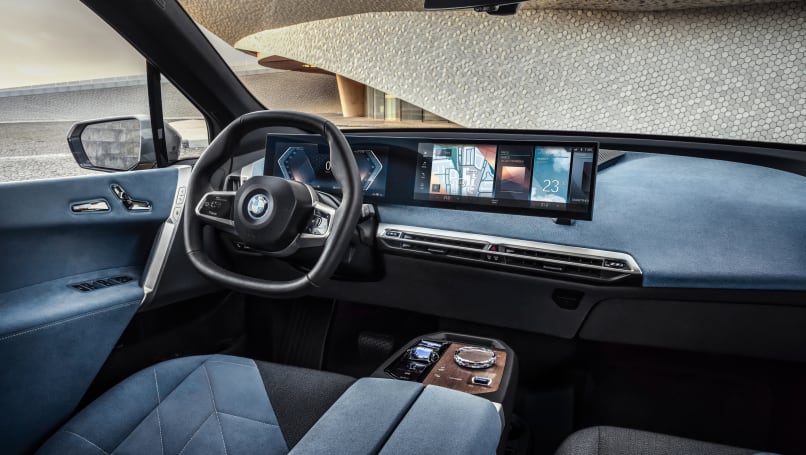
2025 BYD Shark 6 sales scrutinised as rival Kia Tasman ute and plug-in hybrid Ford Ranger PHEV and GWM Cannon Alpha launches loom
BYD Shark 6 fever has well and truly swept over the country, but is it all as...
Browse over 9,000 car reviews

BMW has thrown the covers off of its iX all-electric SUV, a vehicle which it hails as “a dawn of a new era” for the brand.
The iX has “dimensions roughly similar to those of the X5 and X6” and will go on sale globally by the end of 2021, according to the brand. It will debut what BMW calls “an all-new technology toolkit” and the fifth generation of the Bavarian marque’s eDrive electric drivetrain.
It will also have a new battery with a huge 100kWh capacity granting the iX “over 600km” of range on the WLTP cycle. This battery is also capable of charging at up to 200kW on a DC fast charger with a 10-80 per cent charge time of just 40 minutes. The battery also has a more sustainable production process, which BMW says is void of “rare earth metals”.
Powering the iX is two electric motors which combine for an output of 370kW, allowing for a 0-100km/h sprint time of “under 5.0 seconds.” BMW promises energy consumption of less than 21kWh/100km for the iX despite its imposing dimensions.
On the outside the iX continues to develop on a more paired-back design language seen on its China-built iX3 smaller sibling, particularly with the blanked-out signature “kidney grille” which now houses the forward sensor arrays required for the car’s active safety and cruise systems. The iX also has flush doorhandles and a drag coefficient of just 0.25.

Inside, the iX does away with a centre transmission tunnel, maximising interior space, and utilises a philosophy BMW is referring to as “shy technology” – high-tech features “which only reveal themselves when being used”.
Other notable features are a new hexagonal steering wheel, and a 14.9-inch multimedia system and a 12.3-inch digital instrument cluster pair, which will run an all-new operating system from the brand. BMW claims “no other user interface on the market can be operated as simply or safely as ours”.

Under the skin of the iX, BMW has utilised an aluminium space frame and, like the i3 and i8 before it, significant amounts of carbon-fibre in what it calls the Carbon Cage.
Some exterior elements, like the blank grille, will also utilise “self-healing” finishes to avoid stone chips and the like.
The iX is confirmed to take its place some time in the second half of 2021 as the brand’s EV flagship in Australia, joining the i4 sedan and iX3 SUV in its new electric pantheon.

The i3 hatch continues on for the time being, although BMW has stated it will not be replaced by a next-generation model, while the previous i8 petrol-electric flagship ceased production earlier in 2020. Electric versions of the X1 small SUV, 5 Series sedan, and 7 Series saloon are also known to be in the works.
BMW has stated it intends to sell seven million electrified versions of its cars (either in plug-in hybrid or all electric) by the year 2030.
Comments